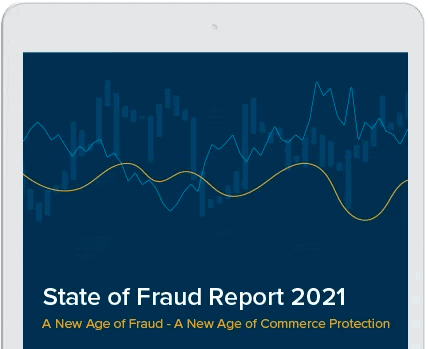As the heart of the holiday gift-giving season approaches, so does the dreaded aftermath: the season of returning the gifts that don’t fit, are the wrong color or just don’t excite the recipient.
In addition to being a hassle, all these returns are expensive for retailers. Someone has to pay to ship a product back, inspect it, and then restock or liquidate it. One-quarter of returns cannot be resold due to seasonality, damage or cost, Signifyd has found. And this accounting of the costs assumes that the return package contains the product that was purchased. In one type of return fraud, purchasers send back packages containing knock-off goods or even nothing at all, keeping the actual purchased item while getting their money refunded based on a shipper’s assurance that the product is on its way back to the merchant.
- 7.5% — The portion of online returns that are fraudulent.
- $11.6 billion — The annual cost in products alone of ecommerce return fraud
- $43 billion — The annual cost of ecommerce return fraud when the cost of shipping, restocking and/or liquidating returns is included.
- 82.6% — Percentage of consumers surveyed who would be more likely to shop again with an online retailer that offered a good return experience.
- 75% — Percentage of consumers surveyed who said they would not shop again with an online retailer who offered a bad return experience.
Sources: NRF, Appriss Retail, Signifyd
This scenario is just one variation on return fraud, a category of retail malfeasance that encompasses everything from empty box returns to so-called wardrobing, when a consumer purchases an item with the intention of using it for one special occasion, then returns it.
Fraudulent returns cost online retailers $11.6 billion in lost inventory alone
Return fraud cost online retailers $11.6 billion in 2020 for the cost of goods alone, according to a Signifyd analysis. The National Retail Federation and Appriss Retail found that about 18% of online retail sales were returned in 2020 and 7.5% of those returns were fraudulent.
This holiday season, return fraud is all the more painful. With supply chain problems leading to inventory shortages for many retailers, shipping scarce products to a fraudster rather than a loyal customer does damage to the relationship a retailer has with that loyal customer who can’t be properly served.
Online retailers see more merchandise returned than brick-and-mortar stores — understandably, since customers are making the purchase based on a photo and description, rather than being able to try on a pair of shoes, for example. And as ecommerce grows to become a larger portion of retail sales, the problem of returns is growing along with it. According to the National Retail Federation, online returns more than doubled from 2019 to 2020.
Easy returns are key to customer experience
A simple way to stem the tide of online returns would be to make it more difficult to return merchandise. However, it’s not only fraudsters who benefit from online retailers’ liberal return policies. Loyal customers do as well — and tightening return policies may send them looking for other places to do their shopping.
Online shopping can feel like a risky experience to consumers: They can’t try on a pair of jeans or feel how warm a blanket is. For consumers to feel confident about ordering online, they often need reassurance that they will be able to return anything that doesn’t fit or otherwise meet their expectations.
Indeed, Signifyd’s 2020 Consumer Sentiment Survey found that 82.6% of respondents said they would be more likely to buy from a retailer that offered a good return experience — and 75% said they would stop shopping with a retailer after a poor return experience. Most consumers pay attention to return policies when deciding whether to make a purchase: 57.7% said they check return policies before they buy. An additional 33.4% said they assume they can return an item for any reason, so they don’t bother reading the return policy. Only 8.9% said they don’t care about a retailer’s return policy.
Making it more difficult to return merchandise – for example, by slowing the process down to allow for more stringent inspections of returned goods or by requiring more documentation of purchases — could help cut down on both returns and return fraud. But doing this would also likely push customers toward online retailers who make returns easier, like Amazon, for example, or brick-and-mortar stores where they can better inspect items before purchasing.
Encourage return shoppers, not return fraud
Signifyd’s Return Abuse Prevention solution can help retailers walk this fine line between preventing fraud and keeping customers happy.
Signifyd uses machine learning to analyze its vast dataset of transactions to predict whether a particular return is high risk, medium risk or low risk. The system combines insights from the Signifyd Commerce Network with risk guardrails set by the retailer to assign an abuse risk level to each return. This indicates how likely it is to be fraudulent or otherwise in violation of the retailer’s return policy.
Based on the assigned risk level, the Return Abuse online fraud prevention solutions can either automate the return process or offer recommendations to the retailer’s support team. Retailers can customize how the system responds to various levels of risk: For each level, should the support team approve an immediate refund? Approve the return for store credit? Hold off on a decision until the transaction can be reviewed? Or decline the refund?
This multi-tiered system helps retailers in two ways. First, it protects them from fraudulent returns by detecting likely fraud and stopping or slowing the refund process when a requested return raises red flags. Cutting down on return fraud will save the retailer money.
But the Return Abuse Prevention solution also makes sure that these savings doesn’t come at the cost of customer loyalty. The system helps retailers ensure that valued customers have a friction-free return experience — one that doesn’t frustrate them with slow or rejected refunds.
For example, the system allows for custom policies, such as a guideline that says never to refuse a return from a customer who is a loyalty club member. This helps streamline interactions with the customers the retailer wants to keep – while cutting down on return fraud.
Interested in tackling return fraud and abuse? Let’s talk.








